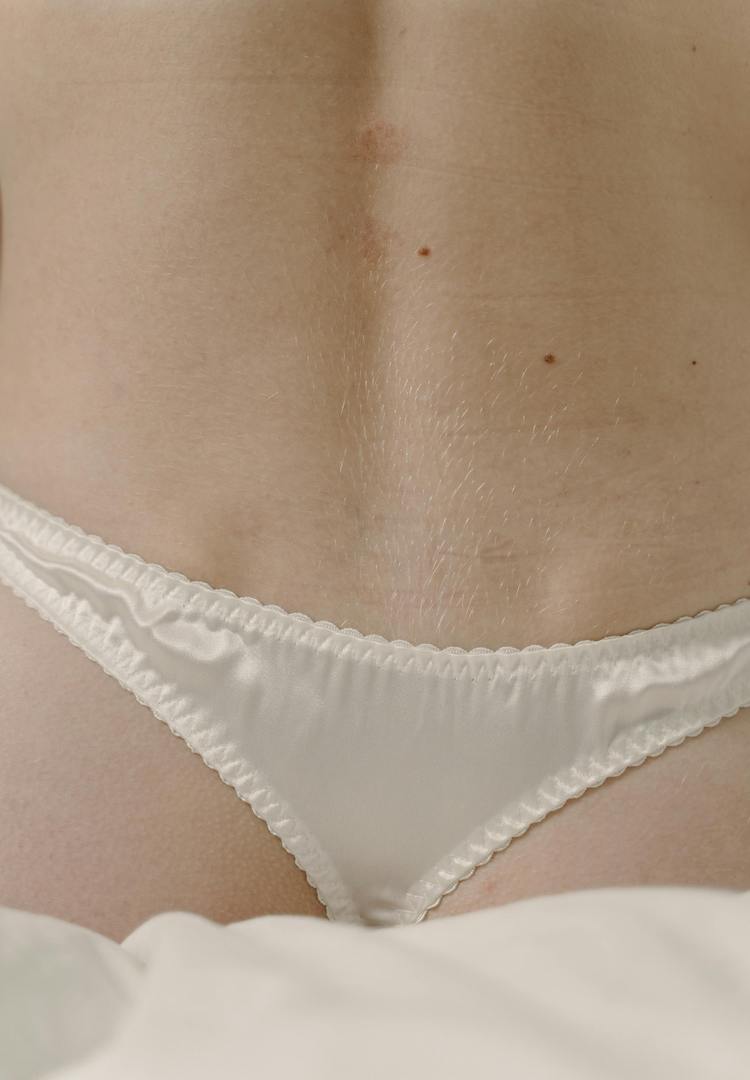How much discharge is normal? We asked a urogynaecologist
Words by Kaya Martin
The changes you should – and shouldn’t – expect to see.
For those with vaginas, discharge is just one of the side effects of having a body. It’s one of those parts of life you probably don’t think about very much at all – until it starts doing something unusual. Then, it’s hard not to think about.
Plus, because there’s still so much stigma surrounding sexual health and discharge can seem a bit icky (even though it’s perfectly fine and natural), it’s not exactly a topic that’s likely to come up in the group chat or at after work drinks, unless your friends and colleagues are particularly openminded.
For more wellness advice, head on over to our Health section.
This means when something seems off, we often find ourselves panic-stricken on WebMD or just praying to the heavens it’ll sort itself out soon. For those who’ve found themselves in that boat, we’ll offer you a little peace of mind: everything is going to be okay.
Discharge can change pretty drastically depending on a multitude of factors: where you’re at in your cycle, the climate, how turned on you are throughout the day, and potentially, even what food you eat. The colour and texture also changes. It can be barely there, creamy and white, clear and sticky – all of which can be healthy.
Of course, if there seems to be a problem, or if you’re experiencing other symptoms like irritation or discomfort, it’s always worth checking in with your GP just in case. Someone who wasn’t afraid to tackle all our discharge-related questions head-on was Dr Rebecca Young, a gynaecologist and certified urogynaecologist based in Sydney.
As a urogynaecologist, I’m sure you’ve seen a lot in your time. How much can discharge vary?
Normal vaginal discharge can vary significantly between women and also depends on the time of the menstrual cycle. Typically when I see patients due to an issue with what is considered heavy discharge there is a cause, however, sometimes this is just normal with no infection or other cause found.
What exactly makes discharge levels change?
Discharge levels will generally increase during the middle part of the menstrual cycle as women approach ovulation. This is due to changes in hormone levels, particularly due to an increase in oestrogen. Similarly, due to hormonal changes in pregnancy, this can also cause an increase in discharge.
Other causes of increased discharge are bacterial or yeast (thrush) infections, in particular, something called bacterial vaginosis (BV) which usually causes a fishy odour. This is not a sexually acquired infection.
STIs such as chlamydia and gonorrhoea can also cause a change in a patients discharge from their normal levels. Cervical polyps which are benign growths or other abnormal growths within the uterus or on the cervix (such as cervical cancer) can also be a cause for a change in discharge however this is much less common.
How can you tell what’s normal and what’s out of the ordinary?
Around the age that periods start most women will notice that similarly to having monthly bleeding they will have a monthly pattern of discharge which is normal for them. If there is a significant variation or change to this then I would recommend seeing your general practitioner for a check up. Other reasons to see a doctor would be if your discharge changes in smell or colour. Normal ‘physiological’ discharge is generally white or clear with a mild smell.
Is it normal to have no discharge?
It is unusual for women to have no discharge prior to menopause, though possible for there to be low levels and lower than usual discharge production during times of arousal, which can be a cause of pain during sex. If this is the case the use of a lubricant during sex can make things more comfortable.
Some medications can have an impact on the amount of lubrication. For women who are close to the age of menopause and have noticed vaginal dryness this may be due to dropping oestrogen levels. The use of a vaginal cream (ovestin) can help to replace oestrogen topically to the vulva and vagina with minimal absorption which makes it a very safe treatment which is used frequently to help with the genital symptoms of menopause.
For more information on vaginal discharge, head here.













